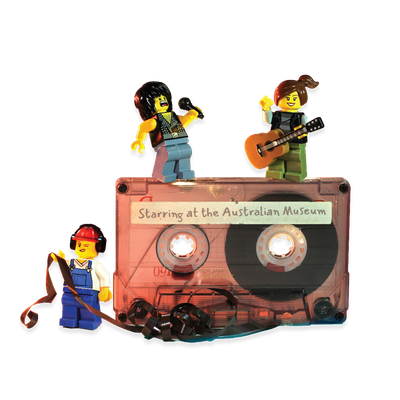Your search returned 8 results
By Page Type
By Tag
- All
- fish (966)
- blog (696)
- fishes of sydney harbour (401)
- First Nations (299)
- Blog (236)
- AMRI (169)
- archives (164)
- Eureka Prizes (146)
- Aboriginal and Torres Strait Islander (135)
- insect (126)
- Ichthyology (124)
- geoscience (109)
- minerals (102)
- climate change (99)
- podcast (94)
- Fish (91)
- Anthropology (89)
- International collections (80)
- Minerals Gallery (78)
- wildlife of sydney (78)
- Labridae (77)
- frog (74)
- gemstone (70)
- photography (66)
- history (64)
- Mollusca (60)
- gem (59)
- staff (59)
- Birds (56)
- Gems (56)
- Indonesia (56)
- education (56)
- shark (55)
- AMplify (54)
- people (53)
- earth sciences (50)
- exhibition (50)
- past exhibitions (50)
- Gobiidae (48)
- sustainability (46)
- Pomacentridae (45)
- Serranidae (44)
- lifelong learning (42)
- science (42)
- Earth and Environmental Science (41)
- Syngnathidae (41)
- Ancient Egypt (40)
- Bali (40)
- bird (40)
- dangerous australians (40)
-
Human evolution
https://australian.museum/learn/science/human-evolution/Extending back for five to seven million years to the time when our ancestors took their first two-legged steps on the path toward becoming human.
-
Our Global Neighbours: Pieces from La Ferrassie
https://australian.museum/learn/news/blog/our-global-neighbours-pieces-from-la-ferrassie/The role of a French Palaeolithic site in the story of human evolution
-
The first modern humans in Southeast Asia
https://australian.museum/learn/science/human-evolution/the-first-modern-humans-in-southeast-asia/Archaeological evidence shows that modern humans had reached Southeast Asia by 70,000 years ago, however the oldest securely dated modern human remains are only about 40,000 years old.
-
Australopithecus afarensis
https://australian.museum/learn/science/human-evolution/australopithecus-afarensis/This species is one of the best known of our ancestors.
-
Homo heidelbergensis
https://australian.museum/learn/science/human-evolution/homo-heidelbergensis/These humans evolved in Africa but by 500,000 years ago some populations were in Europe. They lived and worked in co-operative groups, hunted large animals and made a variety of tools including stone hand axes and wooden spears set with stone spearheads.
-
1912 - Piltdown Man ‘discovered’ in England.
https://australian.museum/learn/science/human-evolution/piltdown-man-skull/1912 - Piltdown Man ‘discovered’ in England.
-
New evidence in search for the mysterious Denisovans
https://australian.museum/about/organisation/media-centre/new-evidence-denisovans/An international group of researchers led by the University of Adelaide has conducted a comprehensive genetic analysis and found no evidence of interbreeding between modern humans and the ancient humans known from fossil records in Island Southeast Asia.
-
Homo neanderthalensis – The Neanderthals
https://australian.museum/learn/science/human-evolution/homo-neanderthalensis/Neanderthals co-existed with modern humans for long periods of time before eventually becoming extinct about 28,000 years ago. The unfortunate stereotype of these people as dim-witted and brutish cavemen still lingers in popular ideology but research has revealed a more nuanced picture.
-
Discover more
2025 Australian Geographic Nature Photographer of the Year
Special exhibition
Free entry
Now open -
Discover more
Unfinished Business
Special exhibition
Free entry
Now open -
Discover more
Wansolmoana
Permanent exhibition
Free entry
Open daily -
Find out more
Burra
Permanent kids learning space
Free entry
10am - 4.30pm![]()
-
Discover more
Minerals
Permanent exhibition
Free entry
Open daily![]()




